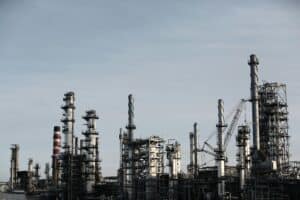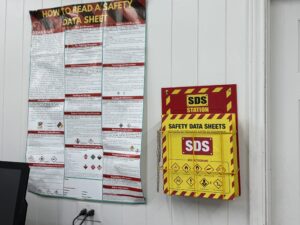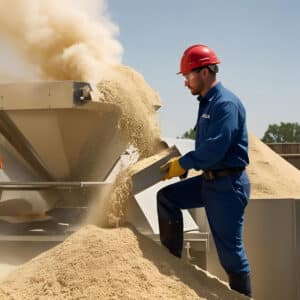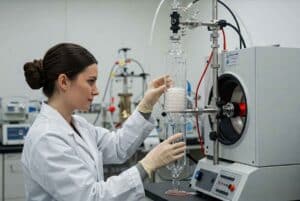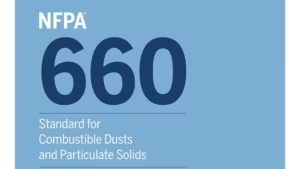We also offer
What Is a Compliance Audit?
A Compliance Audit is a structured evaluation of an organization’s operations, systems, and procedures to verify alignment with regulatory requirements, industry standards, and internal policies. In industries that handle hazardous materials or complex processes, Process Safety Compliance Audits play a critical role in identifying risks, enhancing safety performance, and ensuring legal and operational integrity.
These audits provide a proactive approach to uncover non-compliance issues and help companies maintain safe and sustainable operations.
Why Are Process Safety Compliance Audits Important?
In high-hazard industries—such as chemical manufacturing, oil and gas, pharmaceuticals, and food processing—compliance audits are essential for:
-
Preventing catastrophic incidents like fires, explosions, and toxic releases
-
Protecting employees, the public, and the environment
-
Complying with OSHA’s Process Safety Management (PSM) standard (29 CFR 1910.119) and EPA’s Risk Management Program
-
Reducing liability and avoiding costly fines or legal action
-
Improving your safety culture and operational reliability
-
Supporting continuous improvement in your PSM system
Audits are not one-time tasks but part of an ongoing commitment to process safety excellence.
What Does a Compliance Audit Involve?
At Prime Process Safety Center, our process safety compliance audits follow a proven methodology aligned with OSHA and CCPS (Center for Chemical Process Safety) best practices. Here’s what you can expect:
1. Regulatory Compliance Review
We assess whether your facility meets applicable standards like OSHA PSM, EPA RMP, and other national or international safety regulations.
2. Safety Systems & Procedure Evaluation
We examine the effectiveness of your operating procedures, emergency response plans, maintenance protocols, and more.
3. Management System Assessment
We review leadership involvement, employee participation, training programs, and the overall safety culture.
4. Physical Facility Inspection
On-site inspections are conducted to identify unsafe conditions, equipment issues, and maintenance gaps.
5. Documentation Review
We analyze key documents such as safety data sheets (SDS), process safety information (PSI), incident records, and previous audit reports.
6. Employee Interviews
Auditors engage employees across roles to assess awareness, training effectiveness, and cultural attitudes toward safety.
7. Gap Identification & Risk Prioritization
We highlight areas of non-compliance or weakness and assess their potential impact on safety and operations.
8. Recommendations & Action Plan
Our team provides clear, actionable recommendations along with a prioritized compliance improvement plan.
9. Implementation & Follow-Up
We support your team through the implementation phase and offer follow-up audits to track progress and ensure long-term compliance.
Why Conduct a Process Safety Audit?
Regular compliance audits and reviews deliver several benefits:
-
Maintain OSHA and EPA compliance
-
Prevent workplace incidents and safety failures
-
Identify hidden risks in daily operations
-
Improve process safety performance and emergency readiness
-
Build a strong, proactive safety culture
-
Enhance documentation for inspections and regulators
-
Align internal systems with industry best practices
Why Choose Prime Process Safety Center
At Prime Process Safety Center, we bring unmatched experience and a tailored approach to every audit. Here’s why clients choose us:
-
Specialized Process Safety Expertise: Deep understanding of industry-specific hazards and compliance frameworks
-
Tailored Audit Programs: Customized for your operations, facility design, and risk profile
-
Compliance + Risk Focus: We go beyond box-checking to help you reduce real risks
-
Practical Recommendations: Actionable solutions you can implement immediately
-
Comprehensive Evaluation: Covering all key areas—equipment, people, documentation, and systems
-
Up-to-Date Knowledge: We integrate the latest safety practices and technologies
-
Clear, Detailed Reporting: Easy-to-follow reports with prioritized next steps
-
Training & Engagement Support: Empower your workforce with on-site or virtual training
-
Long-Term Partnership: Ongoing support to help you maintain compliance and improve performance
FAQ
1. What is a Process Safety Compliance Audit?
It's a systematic evaluation to ensure that a facility's operations comply with process safety regulations and industry standards, aimed at preventing hazardous incidents.
2. Why are Process Safety Compliance Audits important?
These audits are vital for identifying potential safety risks, ensuring regulatory compliance, and preventing incidents like explosions or toxic releases, which can have catastrophic consequences.
3. What regulations do Process Safety Audits typically focus on?
They often focus on compliance with regulations like OSHA's Process Safety Management (PSM) standard and the EPA's Risk Management Program (RMP).
4. Who should conduct these audits?
Audits should be conducted by experienced professionals with expertise in process safety, often including external specialists for an unbiased assessment.
5. How often should these audits be conducted?
Regulatory bodies like OSHA recommend conducting these audits at least every three years.
6. What is typically reviewed in a Process Safety Audit?
Audits review various elements, including safety documentation, process hazard analyses, operating procedures, mechanical integrity of equipment, and emergency response plans.
7. What's the difference between a compliance audit and a review?
An audit is a more formal, systematic process, while a review can be a less formal, ongoing process to ensure continual compliance and safety.
8. How long does a Process Safety Audit take?
The duration varies based on the facility's size and complexity, but it generally takes several weeks to a few months.
9. What happens if non-compliance issues are found?
The facility is typically required to address these issues promptly, with corrective actions depending on the severity of the non-compliance.
10. Can Process Safety Audits improve operational efficiency?
Yes, besides enhancing safety, these audits can identify areas for operational improvements, potentially leading to increased efficiency and cost savings.







